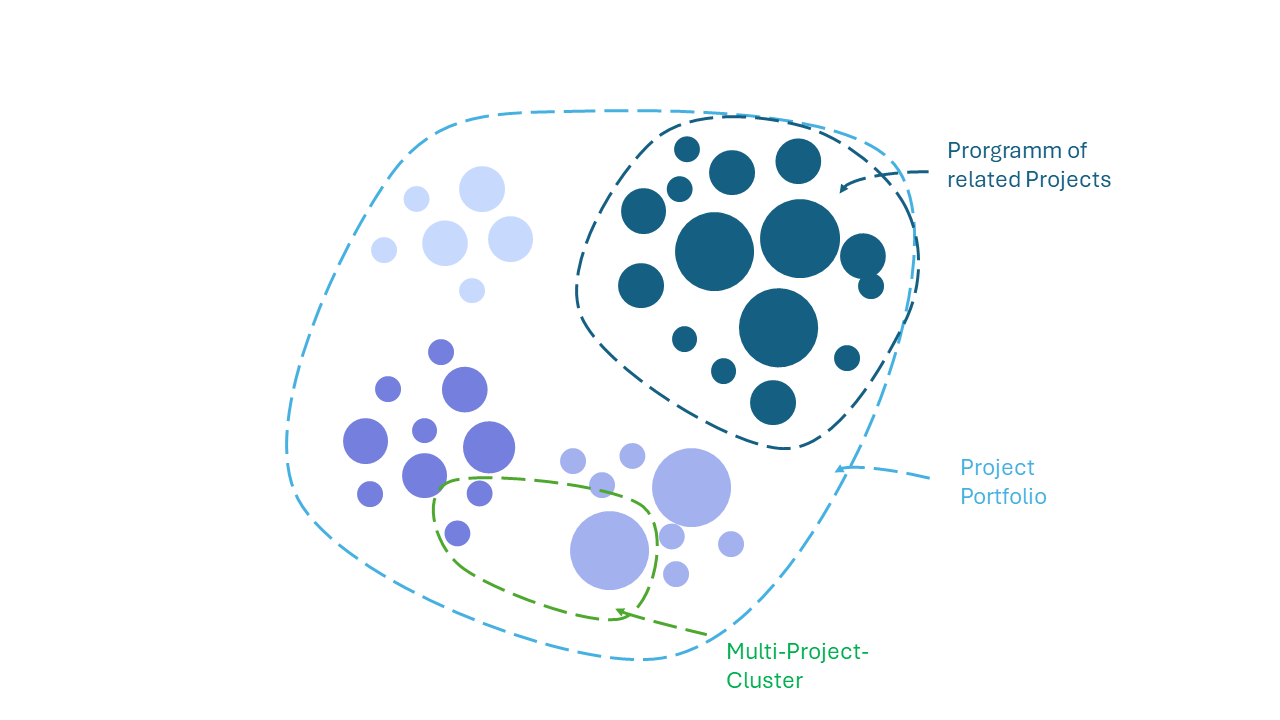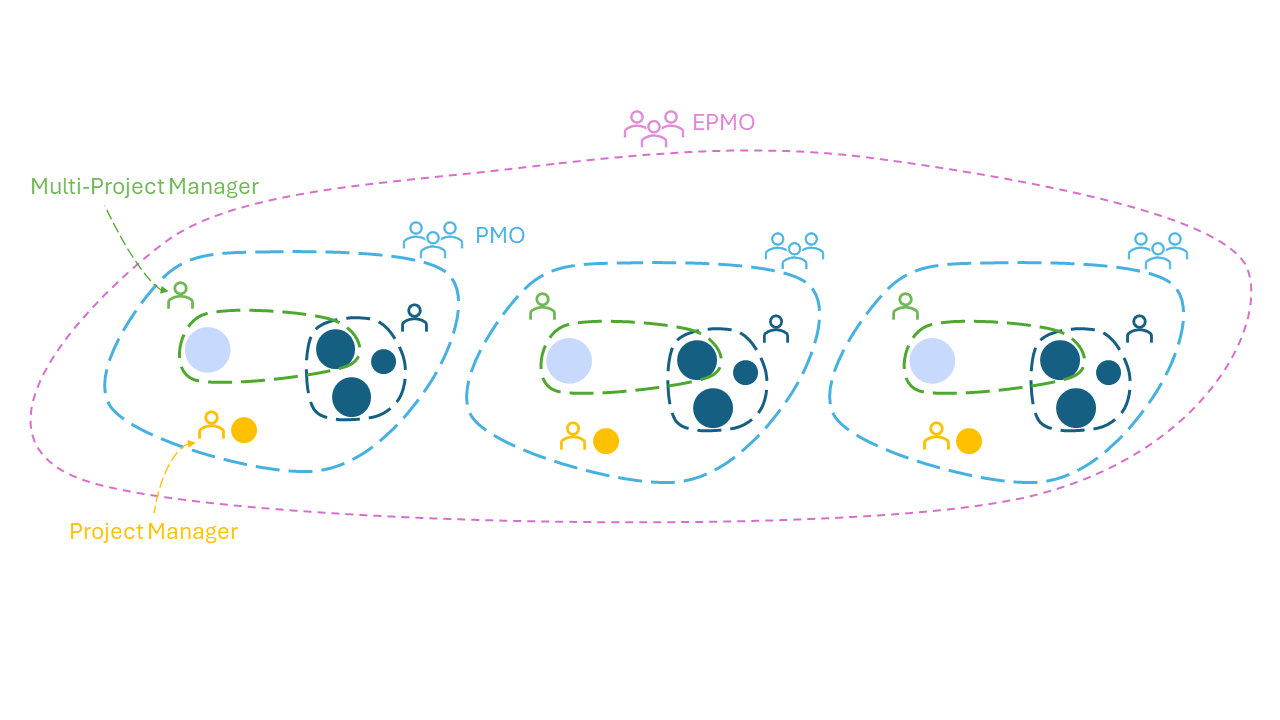What is the difference between a PMO (Project Management Office) and an EPMO (Enterprise Project Portfolio Management Office)?
Would you like to expand your knowledge of project portfolio management?
We recommend reading our article "Project Portfolio Management - An Introduction For Practitioners With Little Time On Their Hands", which covers the topic in depth.
What is this article about?
If you are already familiar with our blog and its numerous articles on Project Portfolio Management and the Project Management Office, we not only have to thank you for being a loyal reader (seriously, it means a lot to us!), but you know that the Project Management Office (or PMO) plays a crucial role in aligning an organization’s projects with the overall strategy and bringing both the projects and the strategy to fruition. If you happen to be new to this entire theme, you may want to brush up your knowledge on PPM and the role of the PMO before going on. We say this since this article aims to introduce yet another of the many closely related terms of the PPM universe, and a state of mild confusion is likely if you are new to this very world. But let us cut to the chase and get right to it. What is the almighty EPMO, and how does it differ from a common PMO?
The Project Portfolio Management Hierarchy and the EPMO
EPMO is short for Enterprise Project Portfolio Management Office. What makes this office pretty enterprise-ish becomes clearer after taking a look at what we call the Project Portfolio Management Hierarchy.
To get things right, it is helpful to remember the basic terminology. Let’s start with the simple project:
A project in a business context is a temporary and unique endeavor undertaken to achieve a specific goal or set of goals within a defined timeframe, budget, and scope. Let’s say you are planning to revamp your website. That’s a project, and projects are commonly managed by project managers. Easy.
If your organization happens to bring forward several related projects trying to achieve a common strategic goal, that very cluster of projects is commonly referred to as a program. Sticking with the example, this may include all projects related to driving more online sales. Programs are commonly managed by - you guessed it - program managers.
A somewhat less common referred to form of these little project clusters is the one made up of several unrelated projects. They are called multi-project clusters and are managed by multi-project managers. Honestly, if you take a closer look at multi-project clusters, you will find that, more often than not, they are very much related, for example, by drawing on a key resource or so. In the line of example brought forward before, this may include all IT-related projects. The critical difference to a program is simply that the multi-projects must relate to several goals.

If you draw a circle across all these clusters, you form a project portfolio. We did that quite literally in the picture displayed. This is where the Project Management Office comes in. The PMO manages the portfolio (or maybe several portfolios).
It is probably not surprising, but the PMO is usually organized as a central and cross-company staff unit (and so is the EPMO, but more on tha later). It makes sure all projects of the portfolio are aligned with the overall strategy, manages portfolio risk and prioritization, reports portfolio health and progress, helps with setting standards and hence project governance or charta, and many more things. If you would like to dig deeper into the tasks a PMO commonly takes on, feel free to check this article here - or this one for good measure.

But by now, you surely know that we have not yet reached the end of this very hierarchy: Some businesses are large enough to feature several PMOs. This especially comes about in international matrix organizations. If that is the case, you may find that overarching all PMOs is the almighty Enterprise PMO - or EPMO.
The EPMO monitors and supports the PMO network and ensures that each department follows the same standards. Taskwise, the EPMO is to the PMO, what the PMO is to the Project Manager. It sets standards, strategic orientation, and so on. More importantly, it aggregates all project data - regardless in what portfolio it is to be found - into one single point of truth and reports it to the C-Level. This very reporting is the pinnacle of PPM: Multi-Project-Portfolio-Reporting. That is quite something, right?
Is the EPMO for you, and how common is it?
The outset is clear: large enterprises, especially matrix organizations, benefit from the EPMO setting. But before an organization should engage in EPMO-ing things, it is advisable to climb up the PMO maturity letter. This is an entire topic on its own - and if you like - you can learn more about it here.
You may wonder how common the EPMO is - and that is somewhat difficult to say. Whilst the entire concept of a PMO seems to be somewhat new to many European companies, the story is entirely different in the US. According to the PMI Pulse of the Profession 2017, 50% of the companies that have a PMO also have established an EPMO. We are not saying you should follow everyone else by default. However, given its wide distribution among companies worldwide, there are strong indications that an EPMO is useful for the types of companies depicted.
A few pointers on good EPMO material for further research
EPMO content is pretty scarce. But here are a few pointers on what might tickle your fancy:
- The EPMO: a paper on how an EPMO can make use of an approach called Strategy to Execution
- What is an EPMO: an overview article by the Project Management Academy
- EPMO Best Practice: Again by the Project Management Academy.
Conclusion:
This article has elucidated the distinction between a PMO (Project Management Office) and an EPMO (Enterprise Project Portfolio Management Office). It explicates the hierarchy of Project Portfolio Management, underscores the PMO's role in steering project portfolios, and introduces the concept of EPMO. The article highlights that certain companies, particularly those in international matrix organizations, house multiple PMOs, with the omnipotent EPMO overseeing them. Furthermore, it emphasizes the significance of an EPMO for large enterprises, especially within matrix structures. The discussion extends to PMO maturity levels and the pivotal role of suitable software, concluding with references to additional resources on the subject of EPMO.

